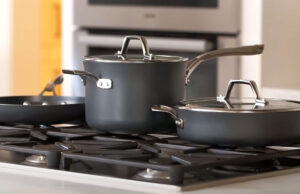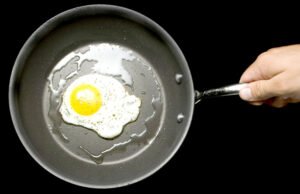As an Amazon Associate, I earn from qualifying purchases at no extra cost to you.
Symptoms of a Bad Dishwasher Water Inlet Valve: Easy Fix Guide
It started with dishes coming out dirty even after a full cycle. Then, strange noises began when the dishwasher tried to fill with water. At first, I thought it was just a clogged hose or low water pressure. But it turned out to be something else—the water inlet valve. Curious what that means? In this article, you’ll find out.
Key Takeaways
- Identify slow or no water filling.
- Watch for unusual sounds.
- Check for leaking under the dishwasher.
- Notice dishes not cleaning well.
- Inspect water pressure and flow.
- Replace a faulty valve safely and properly.
Weak or No Water Flow into the Dishwasher
One of the first symptoms of a bad dishwasher water inlet valve is poor or no water flow during the wash cycle. You may start the machine, but it just hums quietly without filling up properly. It might even stop mid-cycle as if confused about what to do next. When this happens, the valve may not be letting enough water through.
A small story—my friend once thought her dishwasher pump was gone. But after checking, she found barely any water in the tub. The culprit? A stuck inlet valve. Sometimes, mineral deposits or dirt can block the valve screen, preventing proper flow. Cleaning that screen can help temporarily, but if the valve itself is failing, replacement is best.
Another sign is when dishes come out dirty even after long cycles. If there isn’t enough water, detergent doesn’t dissolve correctly. Food particles stay stuck on plates, and you end up rewashing dishes by hand. That’s always a hint something’s wrong with how water enters the machine.
You can test this easily. Run the dishwasher and open it a minute after starting. If there’s little or no water in the bottom, the inlet valve could be the issue. Always unplug and turn off water before checking, though. Safety first, even for simple inspections.
- Weak or no water flow inside.
- Dishes remain dirty.
- May hum but not fill.
- Check water level after starting.
Strange Sounds During Filling Cycle
A bad dishwasher water inlet valve often makes strange buzzing or humming sounds. When it’s working fine, you’ll hear a steady rush of water. But when it starts to go bad, the noise can become uneven or even louder. It’s like the dishwasher is struggling to breathe water in properly.
Once, I heard my dishwasher make a clicking sound every time it tried to fill. It was odd but not loud enough to worry me. Then one day, no water came in at all. That small sound was the valve trying to open but failing to do so. The electric coil inside was weak, causing inconsistent performance.
If your dishwasher suddenly sounds different, take note. Maybe you hear a buzz, or maybe it seems to pulse water instead of running smoothly. Those sounds often mean the valve is wearing out or clogged with debris. Over time, these noises only get worse, not better.
A good tip is to record the sound when it happens and compare it later. That helps you explain the issue if you call a technician. The clearer the description, the faster they can diagnose it. Sometimes, small clues like sound changes save a lot of repair time.
- Buzzing, clicking, or humming sounds.
- Inconsistent filling noises.
- Valve coil may be failing.
- Record noises for reference.
Water Leaks Under the Dishwasher
If you notice water pooling under your dishwasher, the inlet valve might be to blame. It’s located near the bottom, usually where the water supply hose connects. When that valve wears out, small drips can turn into puddles fast. Over time, those leaks can damage the floor or cause mold growth.
My neighbor once found a wet spot on her kitchen floor every morning. She thought her sink pipe was leaking, but the real issue was the inlet valve seal. When water pressure built up during cycles, it leaked slightly. A quick valve replacement fixed it instantly.
Even small leaks deserve attention. Sometimes, the valve housing cracks, especially if exposed to hard water. Mineral buildup can also prevent the valve from sealing tightly. Cleaning won’t fix a cracked part—it needs a full replacement.
You can check for leaks by removing the bottom panel and looking with a flashlight. If you see water stains or damp spots near the valve, that’s your clue. Turn off power and water before any inspection to stay safe.
- Puddles or damp areas under unit.
- Valve seal or housing leaks.
- Hard water causes cracks or buildup.
- Replace valve to stop leaks.
Dishes Stay Dirty After Every Cycle
When dishes keep coming out dirty, people usually blame the detergent or spray arms. But sometimes, the water inlet valve is the silent troublemaker. Without enough water pressure, spray arms can’t spin properly, leaving greasy or gritty residue on everything.
I remember running multiple cycles trying different soaps, only to realize the dishwasher wasn’t filling fully. It sounded like it was working, but when I opened it mid-cycle, there was barely half an inch of water. The inlet valve wasn’t opening enough to let water through.
Low water flow leads to poor rinsing and washing. Glasses look cloudy, plates stay spotted, and food particles cling stubbornly. If your dishwasher detergent tablet isn’t fully dissolving, that’s another red flag. The valve might not be letting enough water mix with it.
Here’s a quick test: run a short cycle and open the door mid-way. If water barely covers the bottom, your inlet valve may be restricted. Replacing it is usually straightforward and instantly improves cleaning quality.
- Dishes come out dirty.
- Spray arms don’t spin well.
- Detergent doesn’t dissolve fully.
- Check mid-cycle water level.
Inconsistent Water Pressure or Flow
Sometimes the dishwasher fills fine one day and struggles the next. This inconsistency often points to a failing inlet valve. It may open only partially or randomly shut mid-cycle. The dishwasher might even stop unexpectedly because sensors detect low water.
I’ve seen cases where water came in too slowly, making the cycle much longer. The valve’s internal spring or solenoid can weaken over time, causing this erratic flow. Even debris inside the valve can block the passage and make it work on and off.
You may hear the dishwasher start normally, then pause for a long time before resuming. This happens because the system waits for enough water. Unfortunately, if the valve isn’t opening properly, the wait never ends. That’s how you know it’s not your plumbing—it’s the valve.
One quick tip: remove the water supply hose and clean the screen filter on the valve. If that doesn’t fix the issue, it’s time to replace it. Regular cleaning prevents buildup and extends the valve’s life, saving repair costs later.
- Water fills inconsistently.
- Cycles take longer.
- Valve spring may be weak.
- Clean filter or replace valve.
Dishwasher Won’t Start or Stops Mid-Cycle
Sometimes, a dishwasher won’t start at all, and you might assume it’s an electrical problem. But surprisingly, a bad water inlet valve can cause that too. The dishwasher waits for water to fill before moving to the next stage, and if it doesn’t detect any flow, it simply won’t continue.
I once worked on a dishwasher that powered up but refused to wash. It turned out the inlet valve coil had burned out. Without that, the valve never opened, and the system got “stuck” waiting for water. Replacing that small part brought it back to life instantly.
If your dishwasher starts and stops mid-cycle, the same valve might be failing halfway through. Overheating or electrical resistance can cause it to shut off temporarily. After cooling, it might work again for a while—another misleading clue that confuses many people.
Testing with a multimeter can confirm if the solenoid is still functional. If it shows no continuity, the valve is done. It’s a simple fix and usually not expensive, especially compared to replacing the whole dishwasher.
- Dishwasher won’t start or stops.
- Valve coil burned out.
- Waits for water that never arrives.
- Test solenoid for continuity.
Final Thoughts
When your dishwasher starts acting up, the water inlet valve often hides behind the scenes as the true cause. From weak water flow to strange noises and leaks, these symptoms all point to one small but vital part. Replacing it isn’t hard, and catching it early saves you time, money, and frustration later on.
| Symptom | Possible Cause | Quick Fix |
|---|---|---|
| No water filling | Valve stuck or clogged | Clean or replace valve |
| Buzzing noise | Weak solenoid | Replace valve assembly |
| Leaks underneath | Cracked housing or seal | Replace valve |
| Dirty dishes | Low water pressure | Check flow, replace valve |
| Long cycles | Inconsistent flow | Clean valve screen |
| Stops mid-cycle | Valve overheating | Replace coil or unit |
| Cloudy glasses | Poor rinsing | Ensure valve opens fully |
| Wet floor | Loose connection | Tighten fittings |
Frequently Asked Questions (FAQs)
Is it safe to use the dishwasher if the water inlet valve is bad?
It’s not a good idea to keep using the dishwasher if the inlet valve is bad. When the valve doesn’t open or close properly, it can cause leaks or poor washing results. Sometimes, it may even overheat the internal components as the system keeps trying to fill. You might end up with electrical faults or flooding. It’s safer to stop using it until the valve is replaced.
Can I replace the water inlet valve myself?
Yes, you can replace it yourself if you’re comfortable with small repairs. Most dishwashers have the valve located behind the lower kick plate. You’ll need basic tools like pliers, a screwdriver, and sometimes a wrench. Always unplug the dishwasher and shut off the water first. Once replaced, run a short cycle to ensure it fills and drains properly.
Do I need to clean the water inlet valve regularly?
It’s smart to clean it every few months, especially if you live in a hard-water area. Mineral deposits can build up on the screen filter and restrict water flow. Turn off the power and water, remove the hose, and gently clean the screen with a brush. Doing this simple step keeps your dishwasher running efficiently for longer.
Is it expensive to fix a bad water inlet valve?
Usually not. A new inlet valve typically costs between $20 and $60, depending on the brand and model. Labor costs may vary if you hire a technician, but many people manage it themselves. It’s much cheaper than buying a new dishwasher, so replacing the valve is often the best choice financially.
Can low water pressure damage the inlet valve?
Yes, it can contribute to wear over time. When pressure is too low, the valve may struggle to open and close properly, putting stress on its components. Also, the dishwasher might not fill fully, leading to poor performance. It’s a good idea to check household water pressure and ensure it stays at a healthy level for appliances.
Do I need to reset my dishwasher after replacing the valve?
Sometimes you do. After installing the new inlet valve, reset the dishwasher by pressing the reset or start button for several seconds (depending on your model). This clears any error codes stored from the previous issue. Then, run a short test cycle to confirm that everything works smoothly.
Is it normal for a dishwasher to hum if the valve is broken?
Yes, that humming is often the sound of the solenoid trying to open without success. The dishwasher sends power, but the valve doesn’t respond correctly. You might hear it for a few seconds before it stops filling. That’s one of the clearest clues that the valve isn’t functioning right and needs replacement.
Can a faulty valve cause water to stay in the bottom after washing?
Not directly, but it can affect the cycle timing. If the valve doesn’t supply enough water, the dishwasher might not rinse or drain as intended. Sometimes, the system gets confused about how much water it has used. That’s why ensuring both the inlet and drain functions are working properly keeps everything balanced.




